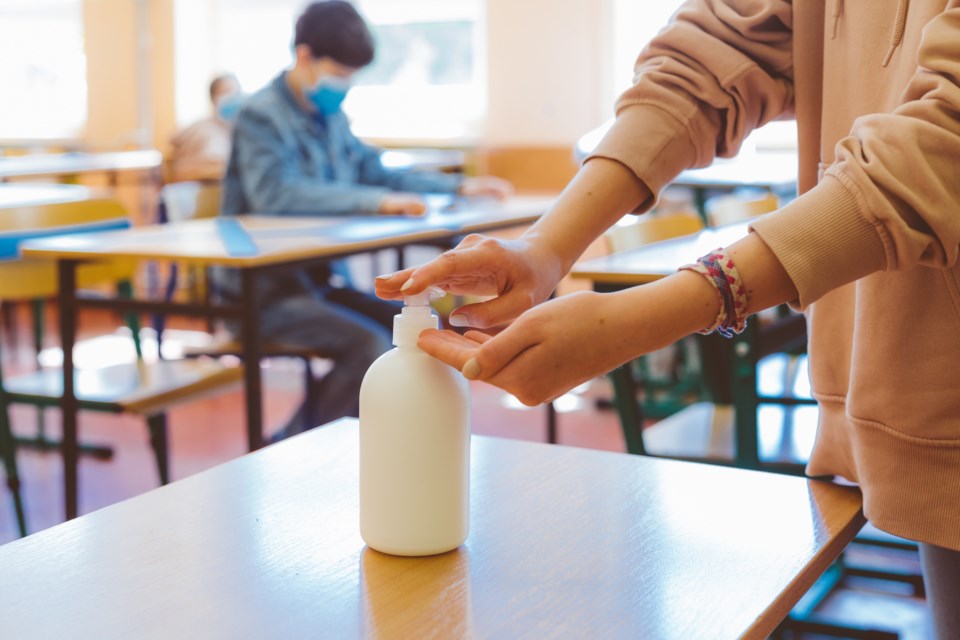Way down south within the borders of our geographic big brother, in the great state of Indiana, schools have already started to reopen.
One of the first schools that reopened in the state - and indeed, the country - was Greenfield Central Junior High School. The New York Times, the ol’ Grey Lady herself, published a story August 1 about Greenfield Central’s grand reopening. Why is a school in session in late July? Beats me, but hey - they did it.
Greenfield Central didn’t even make it through one day. A student who came to class, walked through the halls and took part in classes had tested positive. The county health department literally called the school in the middle of the day and broke the news to them. Everyone in the student’s classes and everyone they came into contact with was sent home and told to quarantine for 14 days.
In the wake of Greenfield Central, dozens of schools and school divisions in the U.S. that had planned to restart classes as soon as possible have pulled back. Even divisions planning to send people into schools only part-time are avoiding doing that.
What happens when someone comes to class with COVID-19? What happens to teachers? What happens to the kids? What happens to the families?
Those questions came to me recently when the Manitoba government released its provincial back-to-school plan. The plan isn’t awful, but for me, it lacks some vital information. The plans by the provincial government in both Manitoba and Saskatchewan lack key information and with only a few weeks left before the school year starts, there's still a lot to be done to keep kids and teachers safe.
For example, masks are not considered mandatory for any students or staff under the provincial plan released last week. That is not a good choice. Even Ontario, hardly a barometer for positive policy on COVID-19, has decided to make masks mandatory for students in Grade 4 and up.
Remember, wearing a mask is less about keeping yourself safe from the disease and more about assuming you have the disease and not spreading it to others. Having kids wear masks isn’t about keeping your kid in particular safe - it’s about making sure all the little Typhoid Marys and Martys don’t catch the disease, then bring it home, get their parents and siblings sick, then getting everyone at mom’s workplace sick, then getting their families sick and spreading out from there.
One of the arguments I’ve heard is that it would likely be hard to ensure little kids wear masks. That makes at least some sense.
This would be a great way to teach young students a valuable lesson in the importance of community - if you and your friends act to help each other out, either good things will happen or bad things won’t.
Another point is that there hasn’t been, as far as I’ve seen, a clear protocol for what to do if (or when) someone shows up to school with the disease. Many aspects of the provincial plan have been left up to local school boards to decide, including producing those protocols. School boards here have not had to make plans for what could happen in case of a mass disease spreading event - why is all the planning being left to them now? Shouldn’t there be at least some publicly available guidance from the people making the plan?
Virtual learning is set to be a part of the education process, but only for high school students and only part-time. Why not add something in for lower grades? Surely junior high students are capable of doing distance learning. Almost everybody was doing distance learning during the pandemic and while I know planning distance learning is annoying for school staff and some classes, such as physical education and home ec, can’t be taught via distance, it’s safer than gathering two dozen people in a small room.
Expenses relating to social distancing measures will be pretty high for school divisions. Classrooms that could previously hold 20 to 30 kids will now need to spread out.
In order to give a student the recommended six feet of distance from everybody else, each student needs just under 19 square feet of space by themselves. Let’s say your classroom is about 20 feet by 20 feet. That’s 400 square feet. If you get rid of every bookshelf, blackboard, non-student desk, filing cabinet and piece of wall-mounted clutter you can, you still have room for 20 kids and a teacher if you’re lucky. Who’s going to move all those desks and bookshelves around? How much will they need to be paid? What will the other kids who now aren’t in that class going to do? Who’s going to teach them?
What I would have wanted to see as part of the province’s plan is an offer to newly graduated teachers or education students to help provide some teaching to kids - all classes in homeroom only when practical, cohorts of two or three classes at most, with new teachers coming in to teach smaller classes.
That didn’t happen. I shouldn’t really be surprised - I’ll admit, anyone who follows Manitoba provincial politics wouldn’t have considered it likely - but if ever there was a time to increase the number of teachers and decrease class sizes, it’s right now.
I keep hearing during the pandemic that we just have to live with this virus. I can understand that to a point, but we must realize that “living with the virus” does require changes. You cannot just herd kids back into the classroom with only a small number of changes.
How much do we need to put at risk to have the illusion of normalcy?
Do you want your kids’ school to become the next Greenfield Central?




